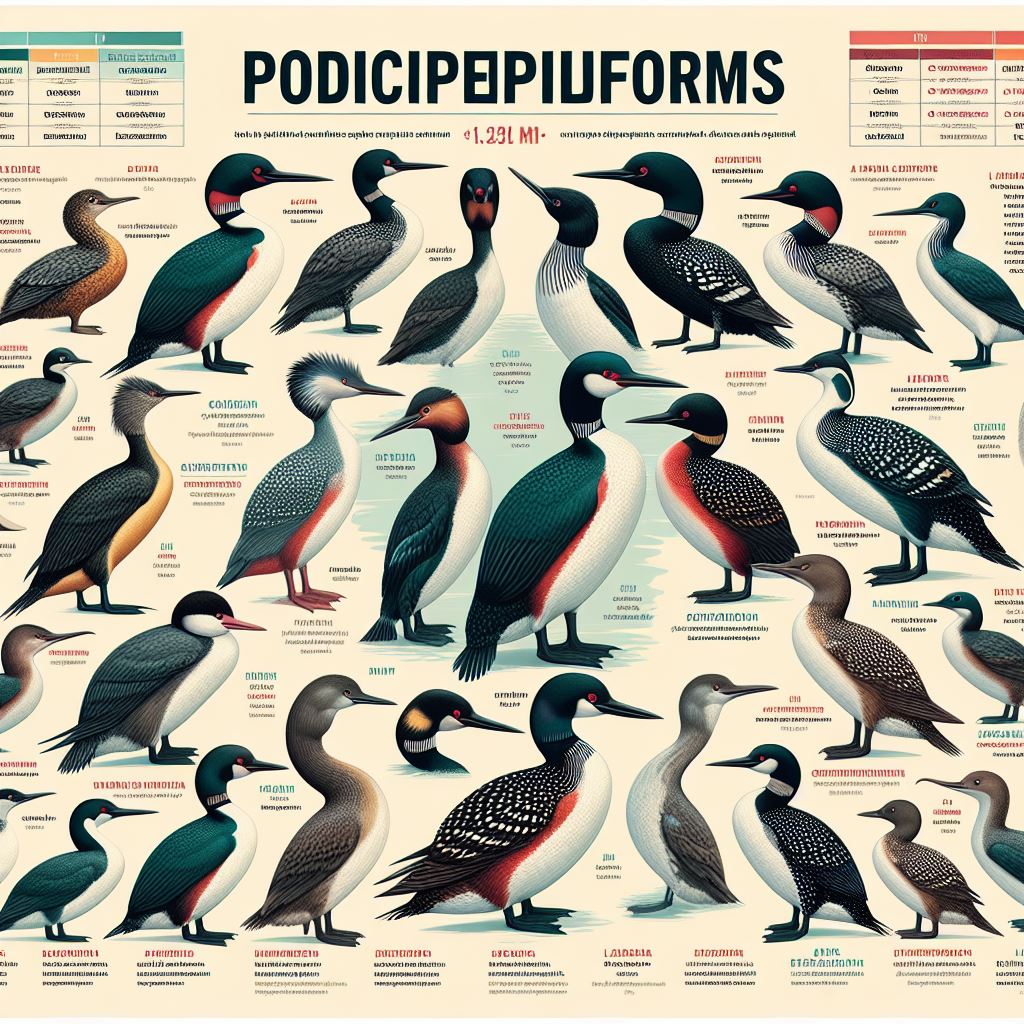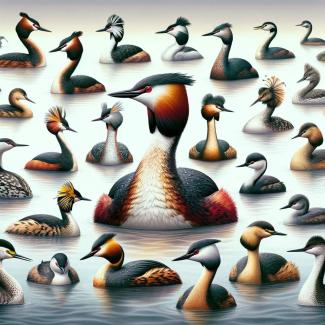
In-Depth Taxonomy Profile of Podicipediformes
Nepal is home to a diverse array of wildlife, one of which includes the fascinating members of the order Podicipediformes. Often observed swimming gracefully in the pristine lakes and wetlands scattered across the country, these bird species have attracted the interests of researchers and bird enthusiasts alike. Here, we will delve deep into their taxonomy profile to better understand Podicipediformes and their unique characteristics.
An Overview of Podicipediformes
Podicipediformes, commonly known as grebes, are an order of diving waterbirds typically characterized by their small to medium size, lobed feet, and pointed bills. These birds are highly skilled swimmers and divers who primarily feed on aquatic insects, fish, and crustaceans. With approximately 20 recognized species found around the world, grebes exhibit a range of distinct features that set them apart from other waterbirds.
Remarkable characteristics: Adaptations for aquatic life
One of the most fascinating aspects of Podicipediformes is their numerous adaptations for life in water. Their lobed feet are not webbed like those of ducks but instead have individual lobes on each toe. This unique feature enables them to propel themselves efficiently through the water. Additionally, they possess dense plumage with a waterproof coating that helps insulate their bodies while submerged.
Another interesting adaptation is their ability to control buoyancy by adjusting air sacs within their body. Grebes can sink gently below the surface without causing any disturbance in the water – a skill that assists them in catching prey and escaping predators.
Podicipediformes found in Nepal
Nepal provides suitable habitats for at least two notable species of grebes: Little Grebe (Tachybaptus ruficollis) and Great Crested Grebe (Podiceps cristatus). Both species thrive in the wetlands, shallow lakes, and ponds of the country, particularly in lowland areas.
Little Grebe
As the smallest member of the Podicipediformes order, Little Grebes are characterized by their compact size, reddish-brown plumage, and distinctive triangular head shape. These birds can be observed in Nepal year-round; their breeding population is thought to be augmented by migrant individuals during the winter months.
Great Crested Grebe
With its elegant appearance and elaborate courtship display, the Great Crested Grebe is hard to miss. Sporting a slender neck, black crests on its head, and tufted ear plumes, this species is occasionally encountered in Nepal's water bodies. Though not as common as Little Grebes, they nonetheless contribute to Nepal's rich avian biodiversity.
Conservation: Threats and efforts
Despite their adaptability to aquatic environments, grebe populations face various threats primarily due to habitat degradation resulting from pollution, draining of wetlands, and human-induced disturbances. To protect these unique birds and ensure their continued presence in Nepal, it is vital for conservation efforts to focus on protecting and restoring their habitats.
In conclusion
The enigmatic Podicipediformes found in Nepal are remarkable for their exceptional adaptations for an aquatic lifestyle. With a strong sense of appreciation for their role in maintaining biodiversity, it is essential that we continue to support conservation measures aimed at preserving their habitats. These extraordinary creatures deserve our admiration and protection, guaranteeing future generations the privilege of witnessing their beauty firsthand.

